Back in 2018, Geoffrey Baumann detailed the visual effects work on Black Panther. He then took care of the VFX on Black Widow. He is back to explain his work on Wakanda Forever and the challenge of the underwater sequences.
What was your feeling to be back in Wakanda?
I was excited to return to Wakanda and the Golden City. It was a familiar place that along with Ryan Coogler we spent much of the first film exploring and creating. We had the base going into this film which allowed us to explore parts of Wakanda we had not seen in the first film.
How was this new collaboration with Director Ryan Coogler?
The scope of this film was much bigger than the first film. Ryan is extremely collaborative as a director and his dedication was 100%. Nicole Rowley and I started from early days in pre-production and knew then that the only way for us to deliver this massive undertaking was to engage with Ryan early on. We did not have the luxury of time. We had an extremely ambitious script that needed to be meticulously planned.
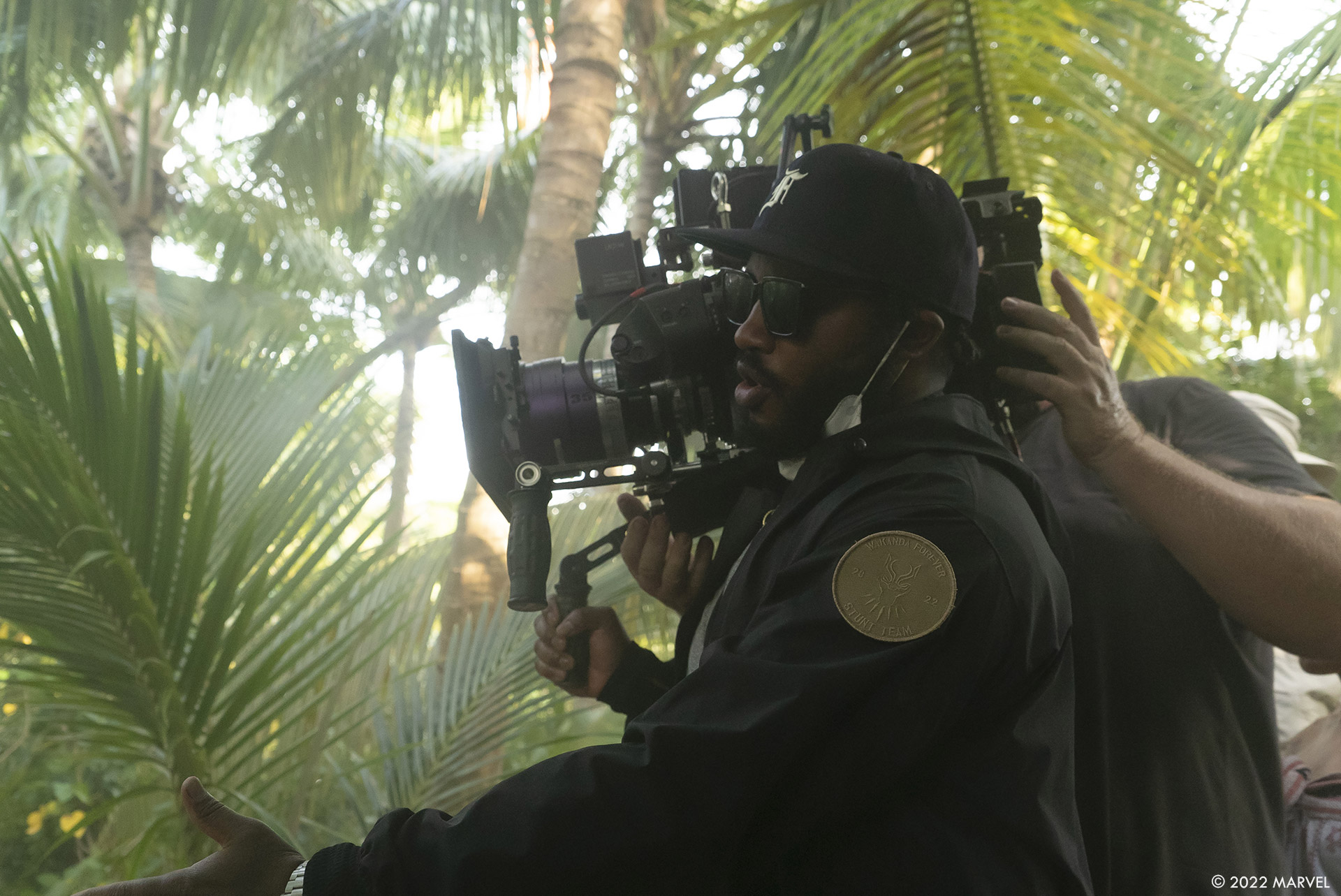
Did it wanted to do the things differently with the VFX after the first movie?
This film wanted to be darker than the first film, both in tone and color. The cornerstone for this was the visual language Autumn Durald Arkapaw (Cinematographer) brought to the film. A strong relationship between Visual Effects and Autumn was critical to the overall cohesiveness of the film. The choice of lenses and lighting correlates to a visual language that the DoP must trust VFX to continue to follow throughout post-production. Using custom detuned full-frame anamorphic Panavision lenses each with unique characteristics and aberrations, it became clear that none of the available lens tools would be able to recreate the characteristics we were observing.
A new digital lens tool kit needed to be developed and shared with all 17 creative partners, using the 115TB of charts, grids and maps that were captured in order to assess and evaluate every little detail of the glass used on the show. Artists and Supervisors across the globe had to be trained and educated to understand all the optical aberrations creating the visual characteristics of each lens, their order of operation, as well as the DoP’s framing and use of negative fill. The cumulation of the above created consistency and a seamless blend between plate photography and CG. As far as I am aware nothing has been done to this level and shared globally before.
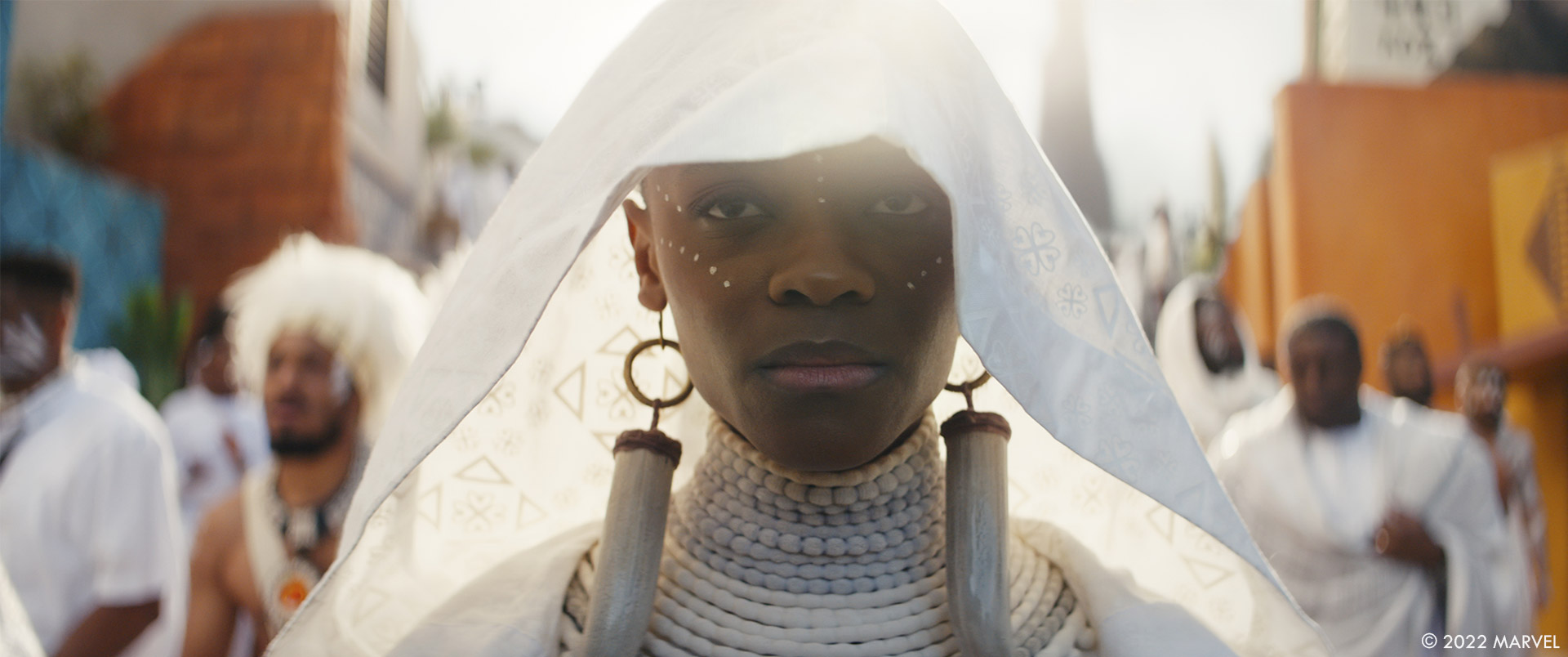
You were second unit director on the movie. Can you tell us more about it?
It was an amazing opportunity and experience. I directed the underwater unit, which was comprised of action and drama. Ryan wanted to shoot as much as possible practically, underwater, which meant the underwater unit would be shooting the scenes before Ryan and main unit would shoot them dry for wet on a stage not underwater. This required consistent communication with Ryan to make sure we were executing his vision. Free divers and a specialty stunts team worked with the talent and crew to help train for the arduous process of shooting underwater. Talent would have to be able hold their breath for upwards of three minutes to complete a take. To overcome this time-consuming process and the communication loop between Director and the talent heavier performance scenes were replicated on a stage in a dry for wet scenario after they had already been shot in our underwater tank. This gave the actors the opportunity to perform underwater and experience its effects, that they could then recreate while performing the same scene later dry on stage. To seamlessly intercut between the underwater and dry for wet methodologies, real-world water characteristic measurements were integrated into our spectral renderer.
How did you organize the work with your VFX Producer?
Nicole Rowley was the VFX Producer on the show and was an amazing partner. The film would not have been possible without her commitment. Nicole and I first break down the entire script separately and then regroup to see if our assumptions are consistent. We then break like work and assets into groups, while at the same time begin to discuss which VFX partners we would like to work with and what work might be appropriate for which partner. Depending on the scope of the work we then break up the work into chunks based on shot count and complexity, ending up with multiple shot packages, 400-500, 200-400, 100-200, 0-100. I then break out development tasks while Nicole begins the process of reaching out to potential partners to check on team availability.
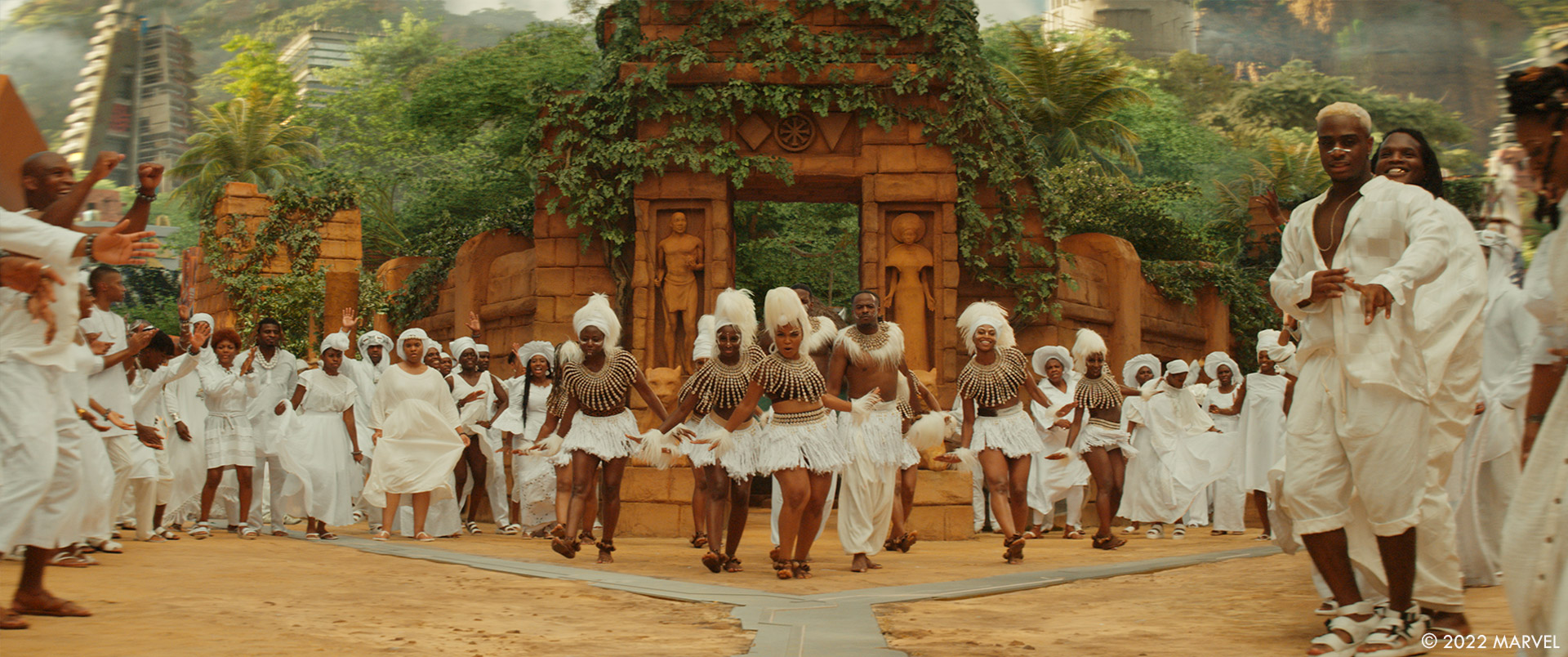
How did you choose the vendors and split the work amongst them?
ILM had created the Golden City in the first film, so they were a clear choice for the Golden City on this project, and we reached out to them as soon as we finished assessing the first draft. Weta FX had been a partner with Nicole and I on Black Widow and they were eager to assist us with all our underwater work. We reached out to them early as well to begin the difficult process of developing an underwater pipeline and learn what we didn’t know about water. Digital Domain had also been a great partner on Black Widow, they rounded out our early exploration to get partners on board to move development forward. As time progressed, we started to bring on additional partners, taking shot count as well as complexity into account. At the end of the day, we ended up with 17 VFX partners and just under 2500 shots.
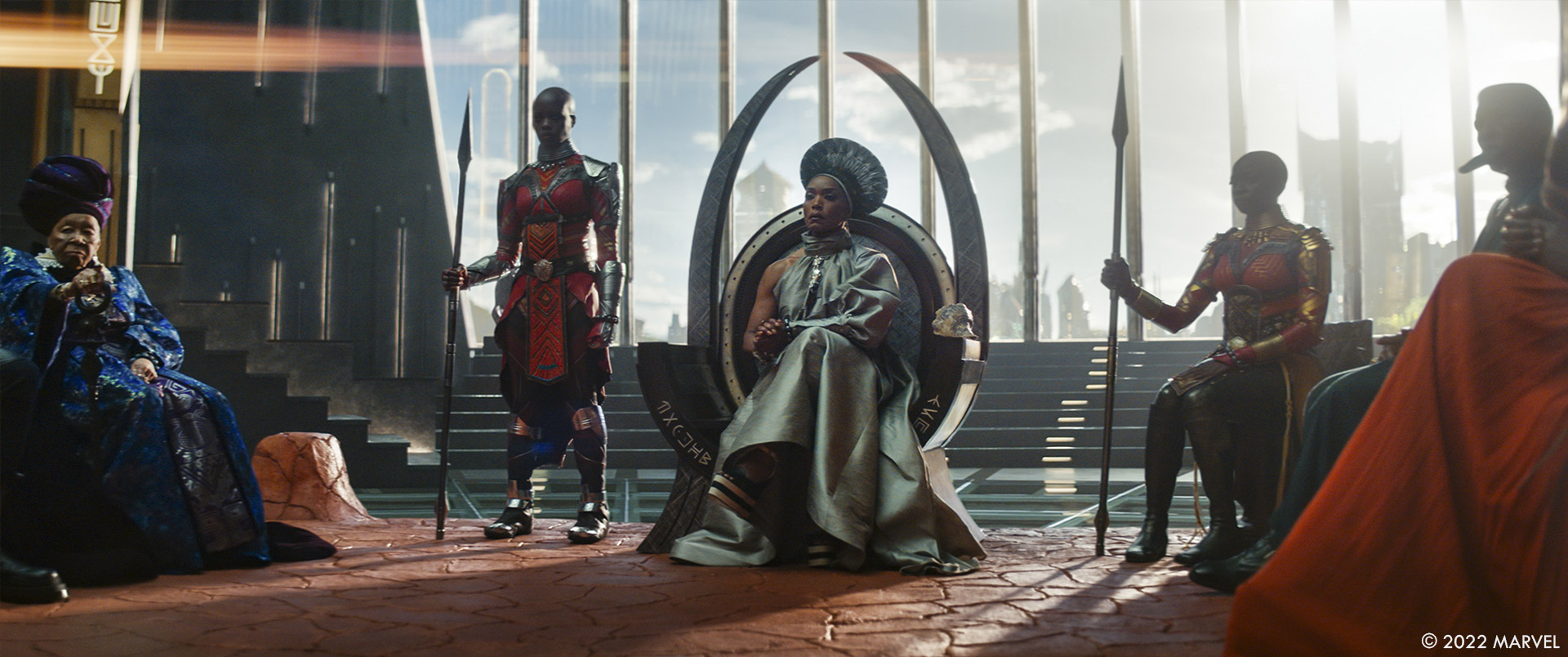
How was the collaboration with VFX Supervisors?
With the complexity of the work required and the short post schedule, collaboration was imperative. Not just between the supervisors but also between the producers and the production crews. All aspects of the production process rely on each other, and Nicole and I tried to give not just responsibility but ownership to all our partners. We wanted the 17 VFX partners around the world to be a part of the process, and know that their opinions and ideas mattered. If the Supervisors feel they have a say, and the artists and leads feel that their opinions matter, we make better films. No one is closer to the shots than the artists working on them. It is difficult to feel like you belong or are a part of a project now days, especially with how much folks are working from home. We relied heavily on the artistry and knowledge of the Supervisors, and the logistical direction of each of the facilities producers. I feel very fortunate to have had such great partners and hope that they ended the experience feeling similarly.
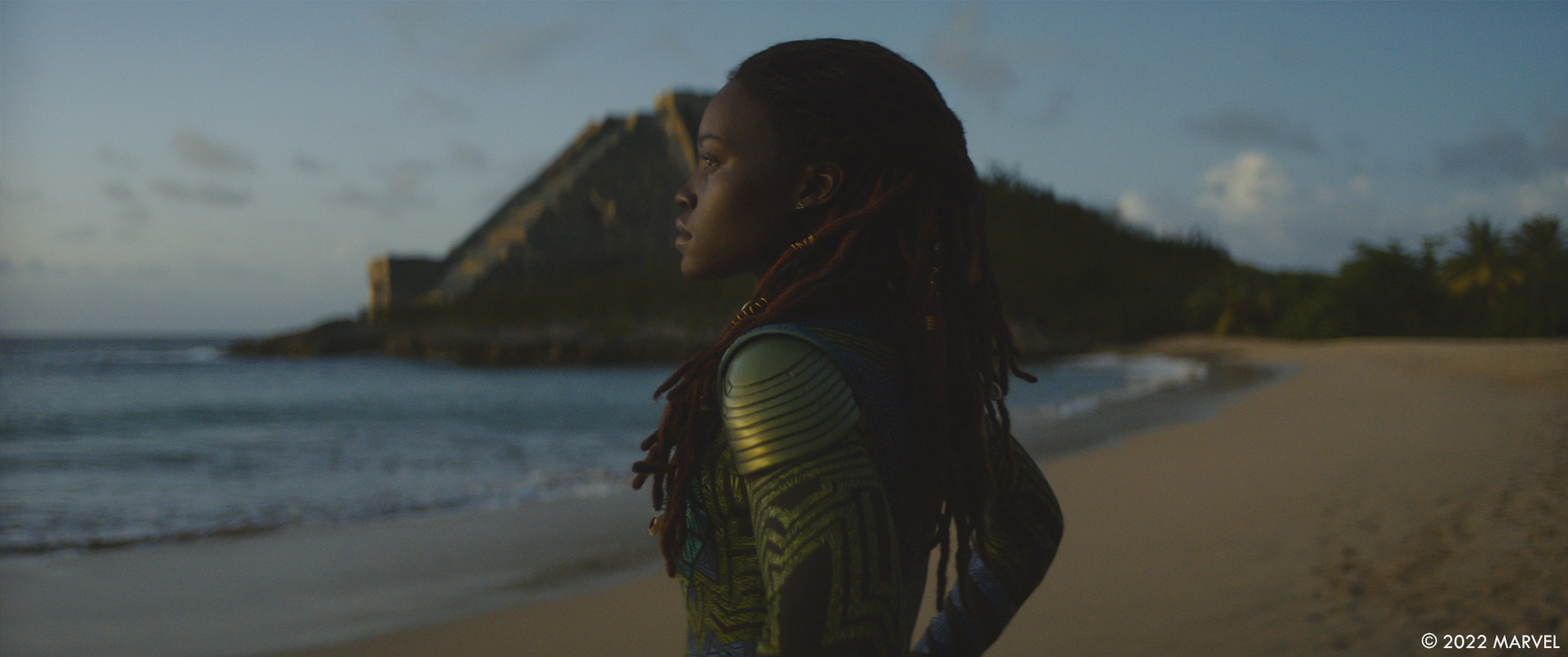
Can you elaborate about the design and creation of the underwater kingdom Talokan?
The design of Talokan rested on the creative shoulders of our production designer Hannah Beachler. She along with our cultural advisor Dr. Aldana, a professor from UC Santa Barbara, worked tirelessly to conceptualize Ryan’s vision. It was based on forgotten or ‘erased’ cultures of ancient Mesoamerica. Primarily relying on the Mayan culture for guidance, Hannah created a real-world history that carried Mayan traditions forward from the Spanish invasion to Talokan. A Mayan Shaman led a group of Mayans into the water off the coast of Yucatan in 1571. This group drifted deeper and deeper into the ocean as time progressed taking the Mayan traditions spiritually, architecturally, and agriculturally with them. With this as a base Hannah created a bible of the Talokan journey. VFX was involved in helping realize this with her. In keeping with the theme of collaboration, Nicole and I set up direct meetings between Hannah, Chris White and his team at Weta FX. We were always involved but we wanted the team at Weta FX to be as close to the source as possible so to speak. The concept artists, modelers, and art directors at Weta FX had direct access to Hannah. This made our workflow much more efficient and made sure we stayed true to her vision.
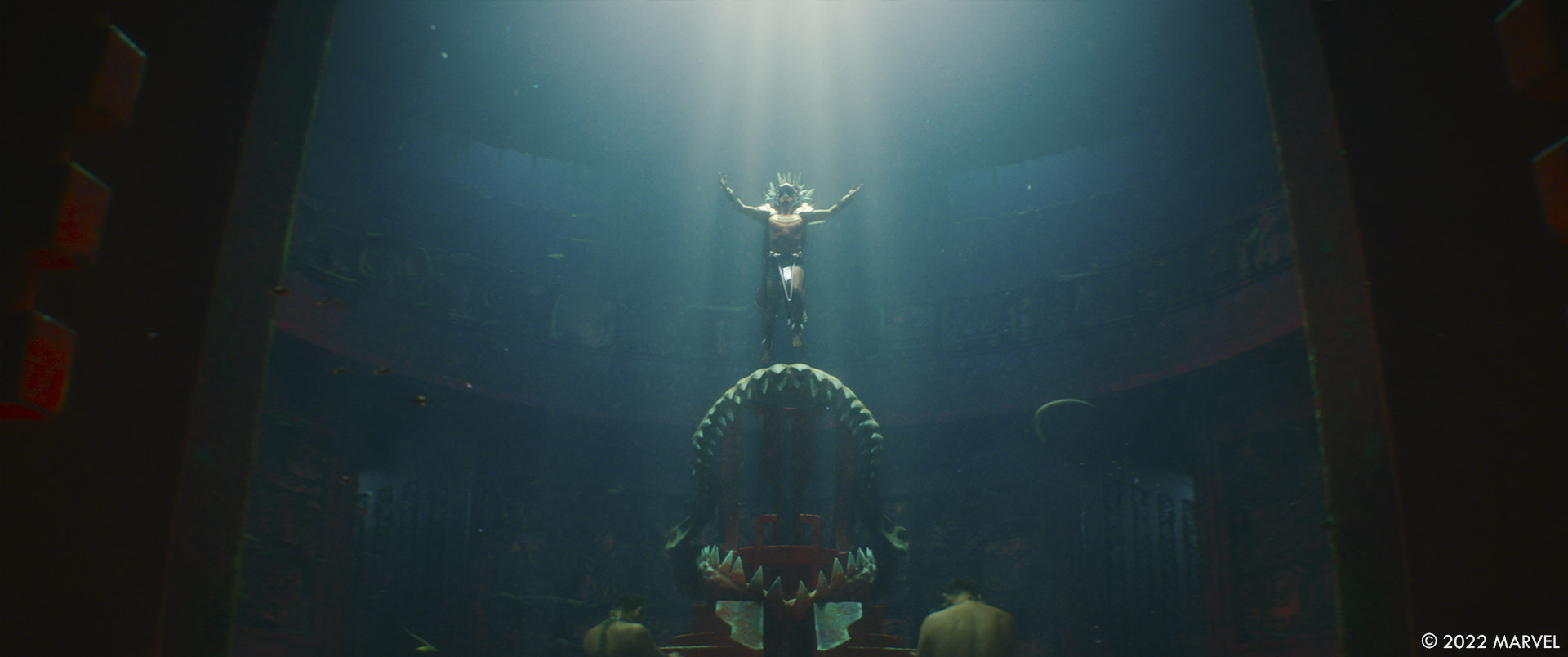
What was your approach for the underwater sequences and how were they filmed?
It was decided early on to shoot as much as possible of Talokan practically underwater. VFX would still be required to do set extensions, cloth sims etc. but the characters motions and photographic qualities captured would be accurate to water. Free divers and a specialty stunts team worked with the talent and crew to help train for this arduous process. Talent would have to hold their breath for upwards of three minutes to complete a take. To overcome this time-consuming process and the communication loop between Director and the talent, heavier performance scenes were replicated on a stage in a dry for wet scenario after they had already been shot in our underwater tank. This gave the actors the opportunity to perform underwater and experience its effects, that they could then while performing the same scene later, dry on stage.
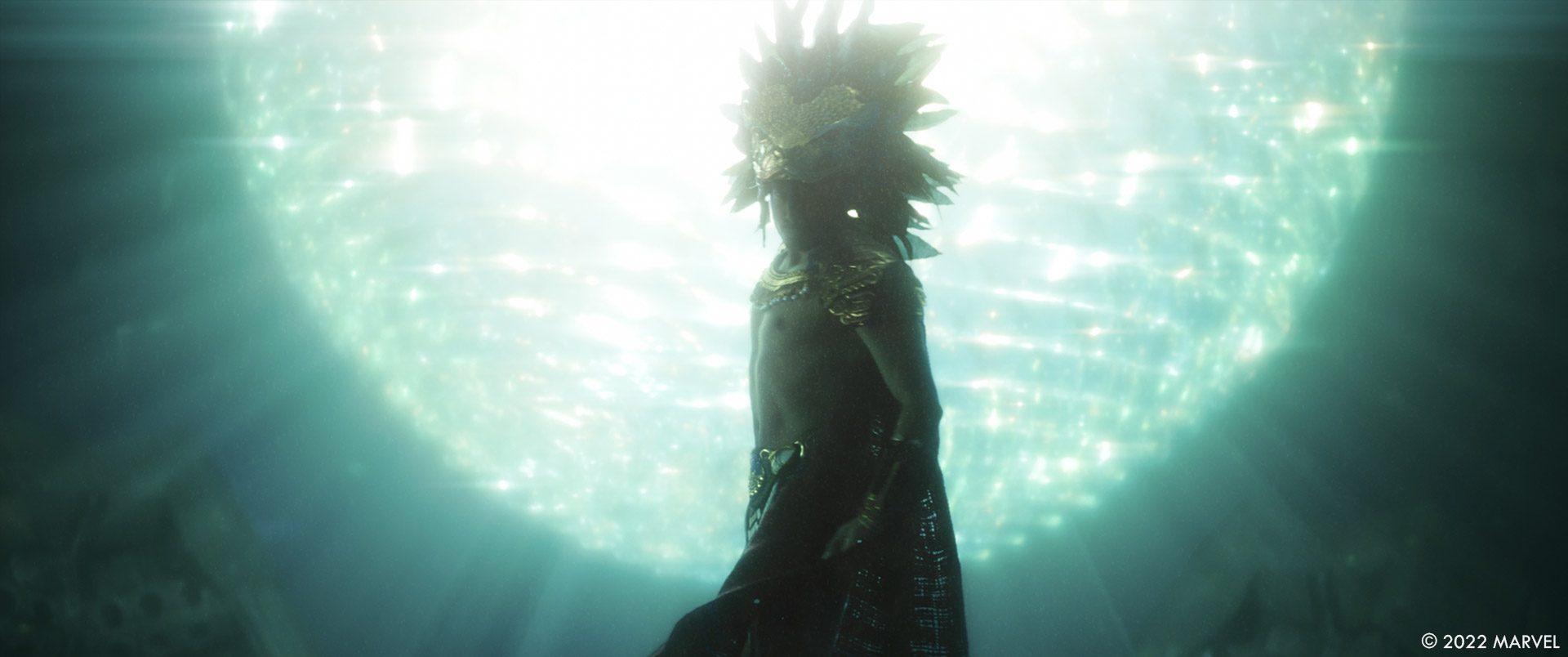
Can you explain in detail about the creation of Namor and his soldiers?
The character study of the Talokanil began early with Marvel Studios Vis Dev department, and development by Digital Domain. The Vis Dev department was busy working on the look and costumes of the hero characters, while Hanzhi Tang and his team at Digital Domain worked on skin color variation and qualities. Reflectivity, iridescence, scales, and various colors of blue were all explored in multiple lighting conditions above and below water. Once Joel Harlow, SFX Makeup Supervisor, was on board we shared our findings with him so he and his team could try and find practical ways to achieve the look Ryan was responding to. Namor’s development went through a similar process with Marvel Studios Vis Dev team regarding costume and look. In creating a mutant from deep in the ocean who looks human, can extract oxygen from the ocean water and has wings on his ankles which allow him to fly, there were a few challenges for VFX to overcome. ILM VFX Supervisor Craig Hammack and Animation Supervisor Mathew Cowie stepped in to help with the development. Animation’s challenge was designing Namor’s unique flight pattern. He relies on his ankle wings for thrust, so understanding that from a physics perspective was the foundation of the approach. Initially we referenced fly boarding and helicopter motion but discovered that to create a dynamic character with unique motion we had to incorporate explosive movements that are found in football and track and field.
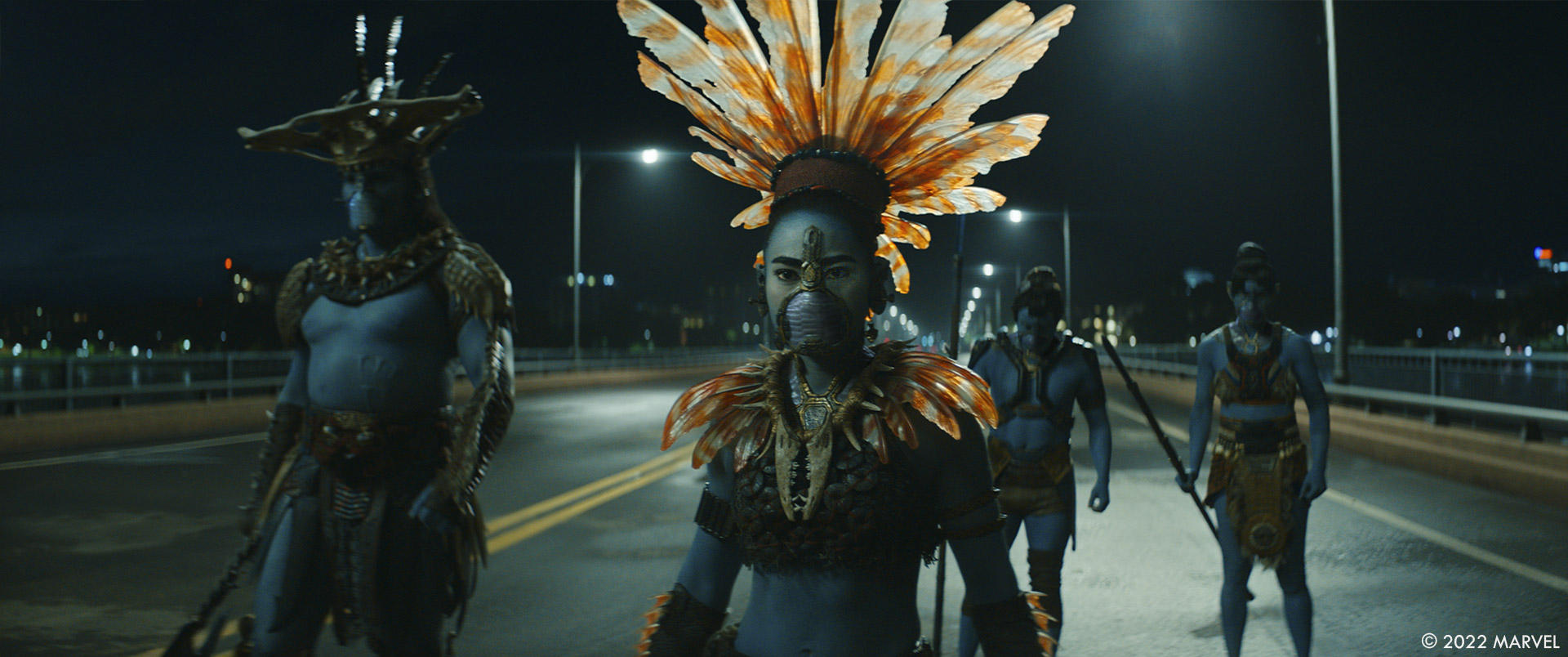
What was the main challenges about the underwater scenes?
The biggest challenge about shooting underwater was time. Everything takes much more time than one realizes. Second to time was managing water quality; maintaining ‘gin clear’ water is very difficult. Anything can contaminate the tank and it can then take 24-48 hours to clean out whatever the contaminant may be. Which is where the time comes back into the picture. Every material, from production design, costumes, makeup, hair, rigging, anything that goes into the tank needs to be tested. The tanks need to be continually maintained, vacuumed, and filtered. You want to start the day off with wide shots as this is when the visibility is the best and the tank the clearest. As the day progresses it will get murkier and murkier, so we would end on tighter shots. This can also become a problem as our characters were not wearing goggles. So by the end of the day the eyes of our talent were getting irritated. So sometimes we started with close-ups and sacrificed visibility in the water for the eyes of our talent. Every day was a learning process for all of us, but with the guidance of the Marine team lead by Dan Malone, our underwater DOP Pete Zuccarini, and our Stunt Coordinator Chris Dennison, we persevered.
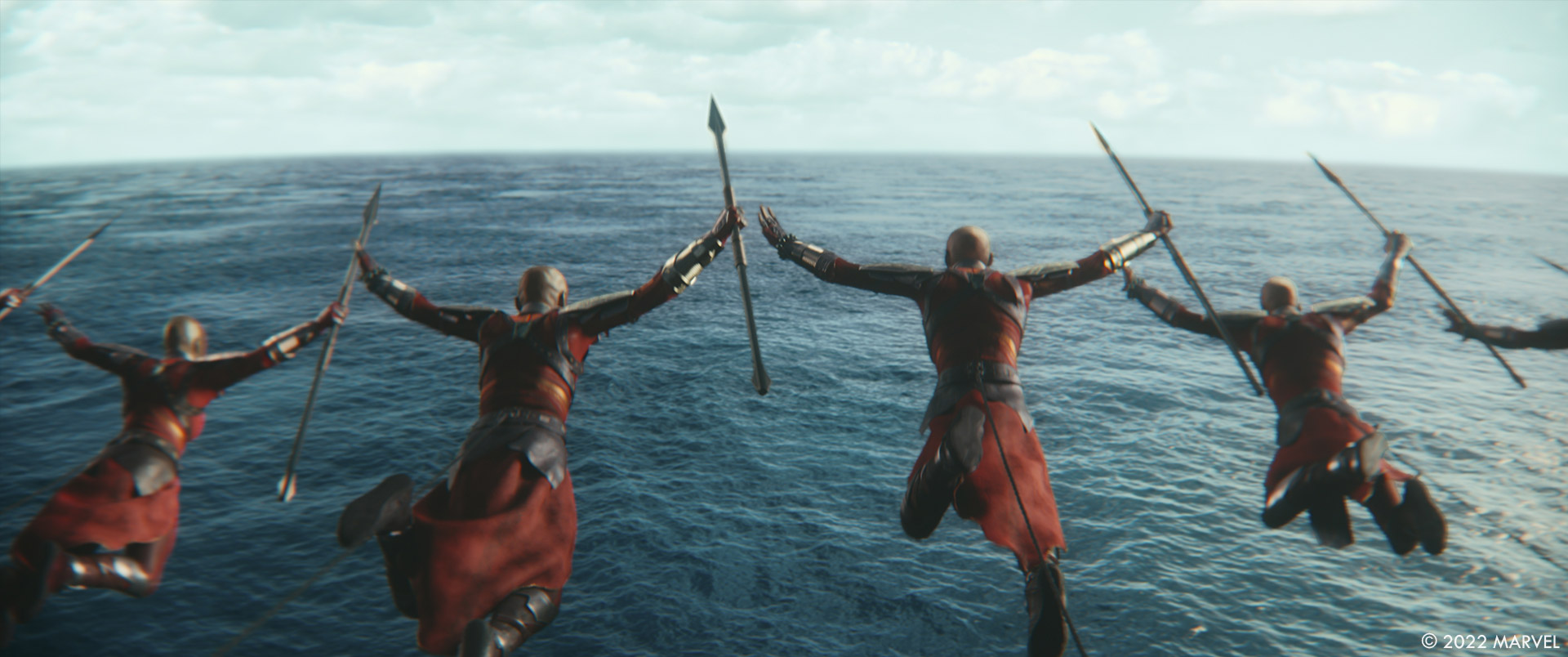
Can you elaborates about the new armor such as the new Black Panther and Iron Heart?
These iconic characters are developed by the Marvel Vis Dev team and then handed off to Digital Domain to realize. There were not many adjustments made to either of these in post. For Black Panther, once Ryan and the Studio approved a look Ruth Carter and her team set about building a practical suit which is worn in much of the film. Digital Domain built the asset for VFX and it was used for digi double take overs and full CG shots, but for much of the film it is a practical suit with some seam fixes here and there. The development of Iron Heart Mki and Mkii was similarly done by the Vis Dev team. Once approved, Legacy Effects helped bring the suits to life. The Mki was a complete build and was primarily practical when close enough since the face was exposed. The Mkii suit was a CG build since we only had helmet and shoulder pads to work with on the day, but it gave us eyelines, dimensions, and material reference. Additionally, Legacy built a 1/3 scale of the full suit.
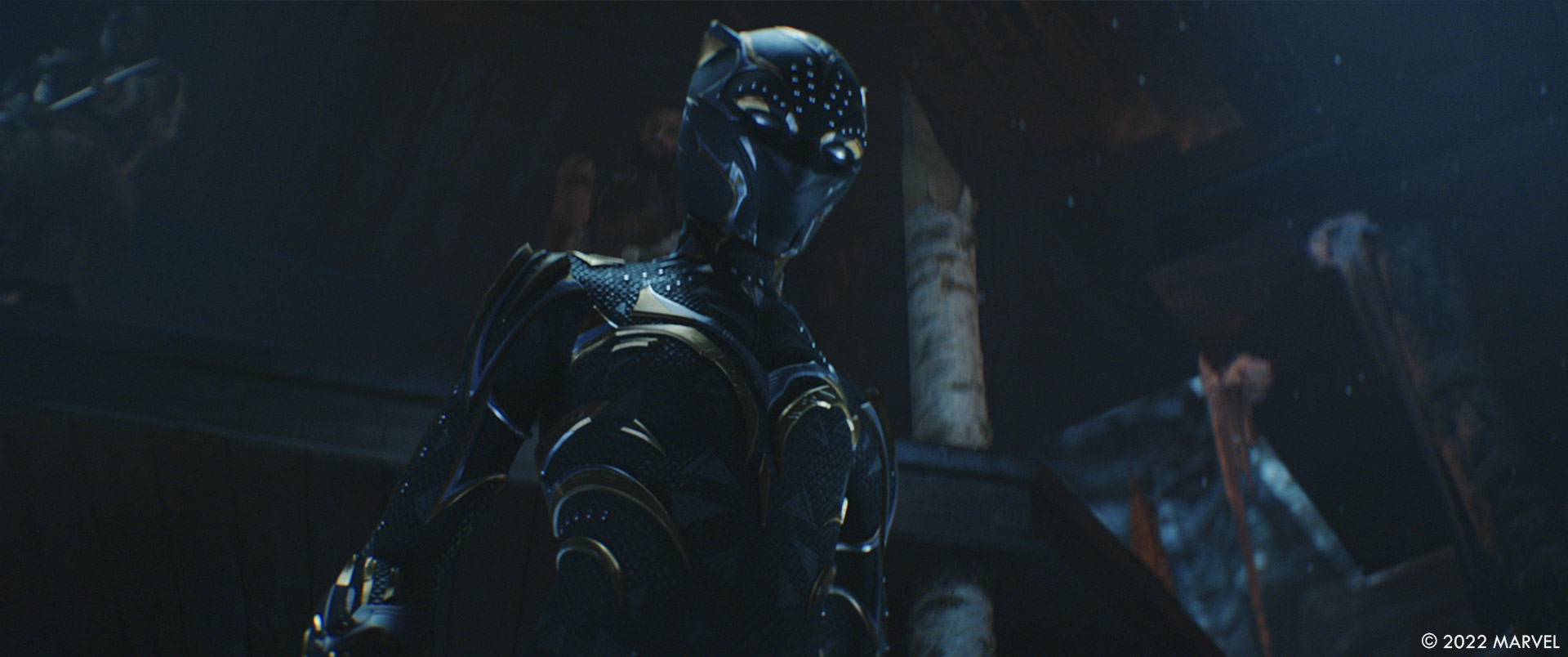
Can you tell us more about the water bombs?
The hydro bombs were conceptualized by Hannah Beachler and loosely based off a hand grenade. From here we took some liberties saying that inside our obsidian container were millions of hydrogen molecules. Once the obsidian breaks these hydrogen molecules attract millions of oxygen molecules and create a massive water event. These hydrobombs were the catalysts for the street and city flooding. An average hydrobomb explosion was around 70ft high and generated 200,000 gallons of water. To achieve this, ILM built a complex chain of dependencies in a proprietary suite of robust and efficient solvers for both liquid and air simulations to generate the surface water, whitewater, spray and mist components of the hydrobombs. The components then were rasterized into dense frustrum grids to help blend surface and volumetric elements. Large dump tanks were integrated into the sets, which generated safe onset flood water and character interaction. Additionally, real world reference was used as a guide for increasing the amount of water and turbulence levels, to enhance the danger of what was shot on set. The flooding water needed to cover very large regions of the city. To do it in a single simulation would be very time intensive, so a clustering approach was used to break larger areas into smaller zones and iterate on each individually. We defined large overlapping bounding regions between these clusters with aovs and were able to blend seamlessly between them in comp.
A big thanks for your time.
WANT TO KNOW MORE?
Digital Domain: Dedicated page about Black Panther: Wakanda Forever on Digital Domain website.
ILM: Dedicated page about Black Panther: Wakanda Forever on ILM website.
Weta FX: Dedicated page about Black Panther: Wakanda Forever on Weta FX website.
Disney+: You can now watch Black Panther: Wakanda Forever on Disney+.
© Vincent Frei – The Art of VFX – 2023

